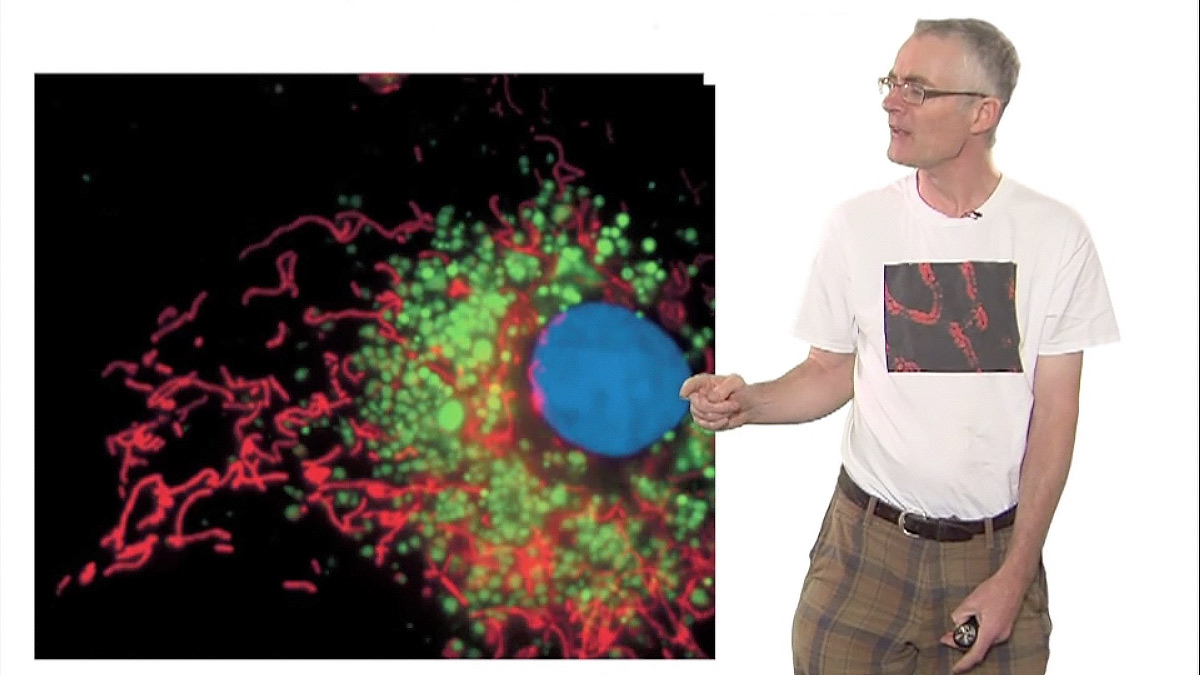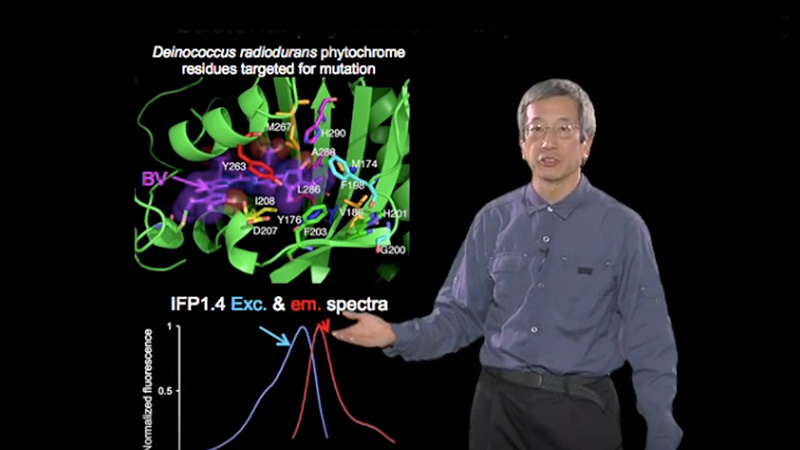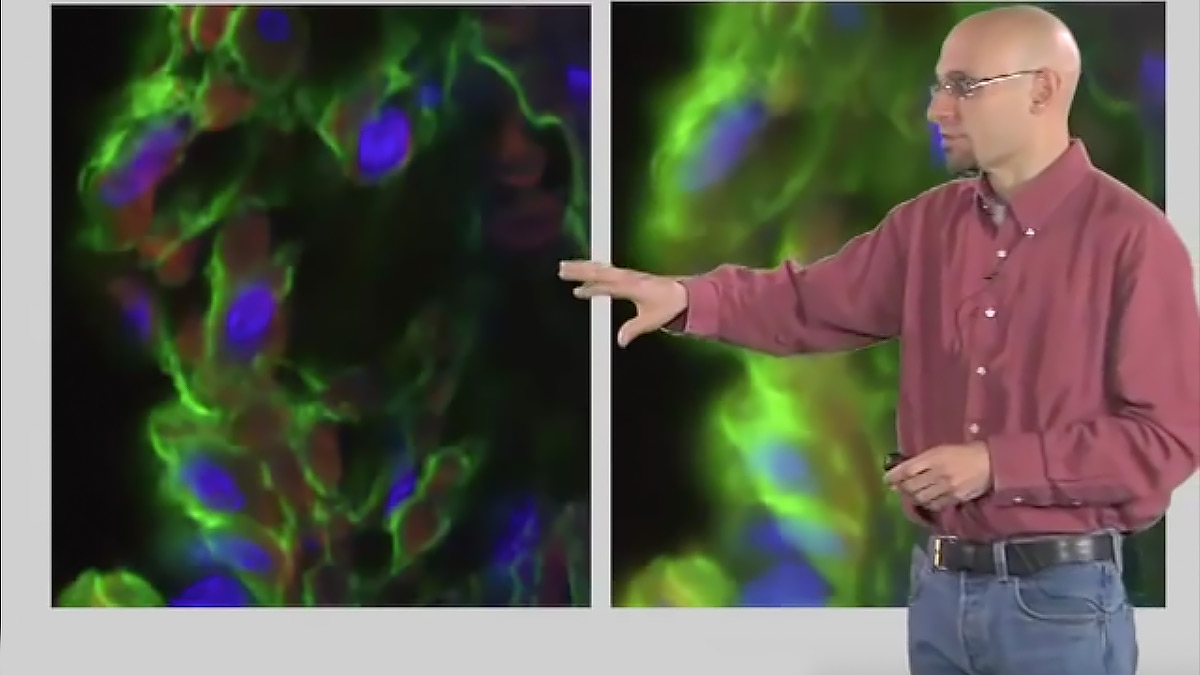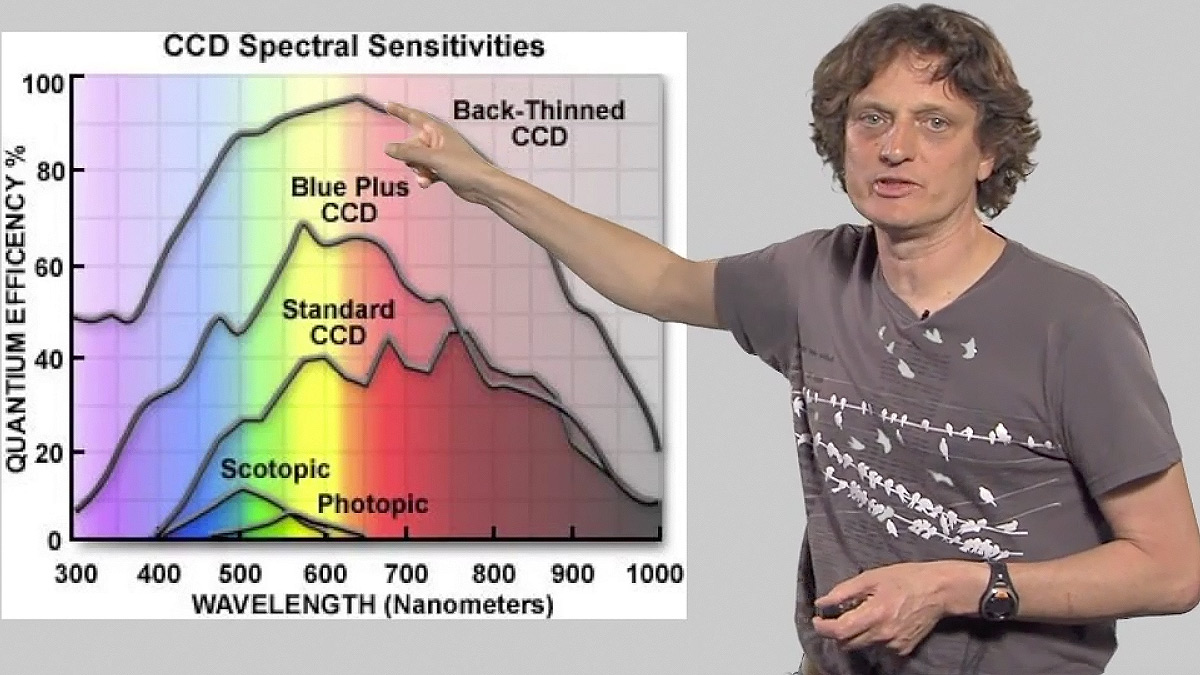Talk Overview
Fluorescence is a process in which matter absorbs light and re-emits at a different wavelength. Fluorescence is widely used in biological microscopy. This lecture describes the principles of fluorescence and fluorescence microscopy.
Questions
- Match the time scale to these transitions:
- Femtosecond
- Picosecond
- Nanosecond
- Transition from the excited state to the ground state
- Photon absorption
- Transition to the lowest energy excited state
- True or False: The transition from the excited to the ground state is always accompanied by the emission of a photon.
- The brightness of a dye depends most upon its
- Photobleaching rate
- Fluorescence lifetime
- Absorption coefficient
- Solubility in water
- Which is true of fluorescence microscopy
- Switching filters in an emission filter wheel is typically slower than changing the filter cubes in a turret.
- A 480/40 emission filter passes 440-520 nm light.
- The filter cube typically has two filters and one dichroic mirrror
- The tube lens is generally placed before the filter cube
Answers
View AnswersSpeaker Bio
Nico Stuurman

Nico Stuurman is a Research Specialist at the University of California, San Francisco, in the lab of Ron Vale. Nico combines his expertise in computer programming and microscopy to advance many projects including the Open Source software, Micro-Manager. Continue Reading









EBINESH S says
The best web series on Microscopy is iBiolgy. Thanks for this gem to us freely. I would like to know the correct answer for the First question. Time scale and transition.
i – B
ii -C
iii – A
The answered shown in the answer section has an typo error may be. Pls correct